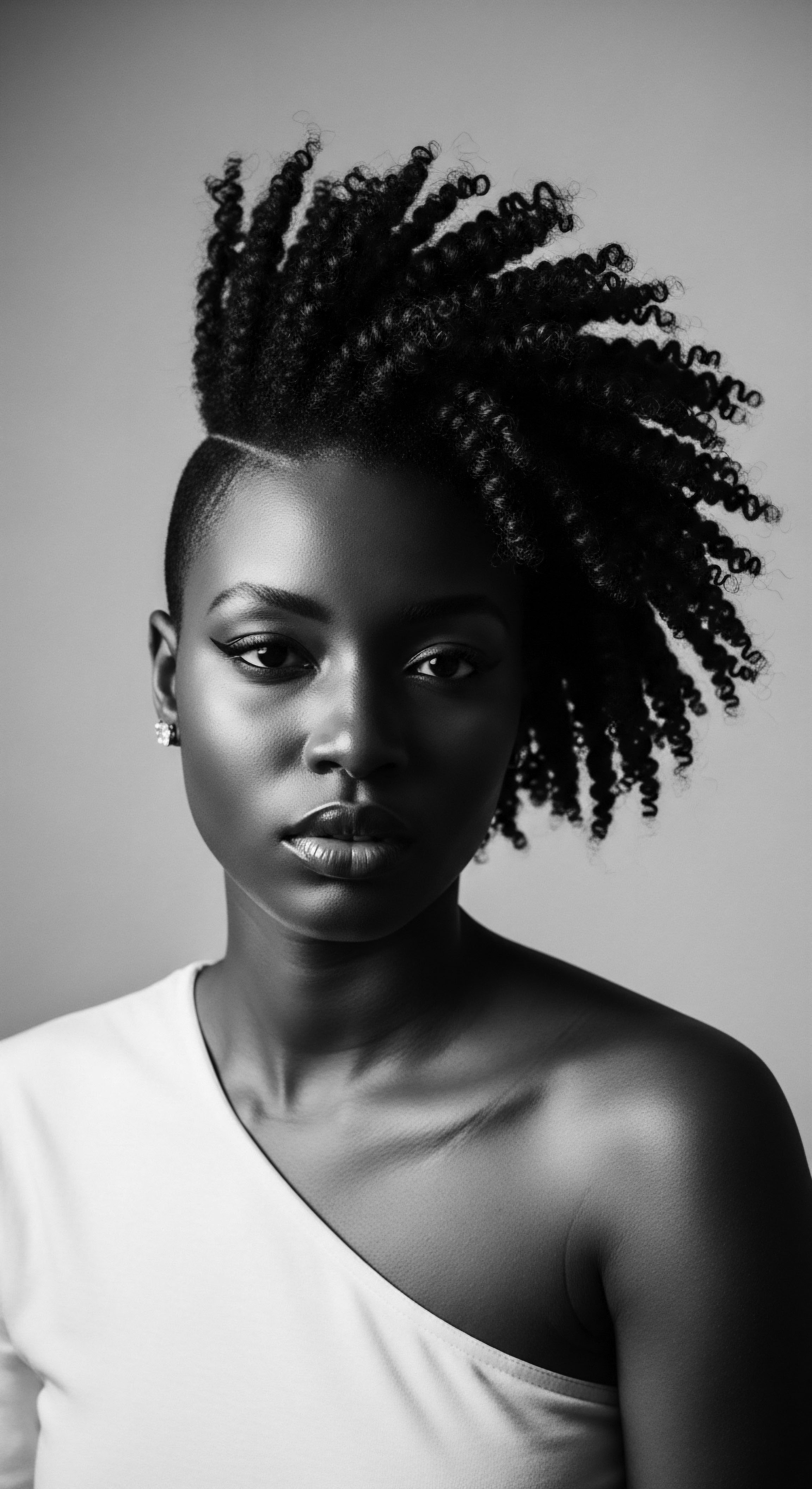
Fundamentals
The African American Beauty Heritage stands as a profound explanation of identity, resilience, and ancestral wisdom, particularly as it pertains to textured hair. This legacy is not merely a collection of aesthetic preferences or fleeting trends; it is a deep-rooted statement of cultural continuity, a living archive inscribed upon each curl, coil, and wave. It represents a continuous dialogue between the past and the present, a recognition of how ancestral practices and communal understandings have shaped the distinctive ways Black and mixed-race individuals perceive, care for, and adorn their hair. The very term ‘African American Beauty Heritage’ signifies the accumulated knowledge, the enduring traditions, and the profound significance that hair has held within these communities across generations, a meaning that extends far beyond superficial adornment.
This heritage, a rich description of Black diasporic experiences, offers a unique lens through which to comprehend the broader landscape of beauty. It clarifies how hair, especially textured hair, has served as a powerful medium for self-expression, a symbol of resistance against oppressive beauty standards, and a tangible link to ancestral homelands and practices. The explication of this heritage reveals its fundamental connection to the journey of African peoples across continents, a journey marked by adaptation, innovation, and an unwavering spirit. The practices, ingredients, and styles that constitute this heritage are not static; they are a dynamic delineation, constantly evolving while retaining their core ancestral resonance.

Echoes from the Source ❉ Ancestral Roots
The origins of African American beauty traditions are deeply embedded in the diverse cultures of pre-colonial Africa. Across the continent, hair was far more than an anatomical feature; it was a potent symbol, a form of communication, and a repository of spiritual and social power. The elaborate styling, the careful adornment, and the communal rituals surrounding hair care served as powerful indicators of age, marital status, social rank, ethnic identity, and even spiritual beliefs.
For instance, in many West African societies, the intricacy of a hairstyle often conveyed significant information about an individual’s lineage or their role within the community. Hair was frequently seen as the closest point to the divine, a conduit for spiritual energy, necessitating its meticulous care and respectful handling.
Traditional practices involved a rich array of natural ingredients, each selected for its specific properties in nourishing, cleansing, or styling hair. Shea butter, palm oil, various plant extracts, and clays were routinely employed, their uses passed down through oral traditions and practical demonstration within family units. These practices were not isolated acts of personal grooming; they were often communal affairs, fostering bonds and transmitting cultural knowledge from elders to younger generations.
The act of braiding or twisting another’s hair became a tender ritual, a shared moment of intimacy and storytelling, reinforcing social cohesion. This deep connection to the earth’s bounty and the collective wisdom of the community forms the bedrock of the African American Beauty Heritage, a testament to the enduring power of ancestral ways.
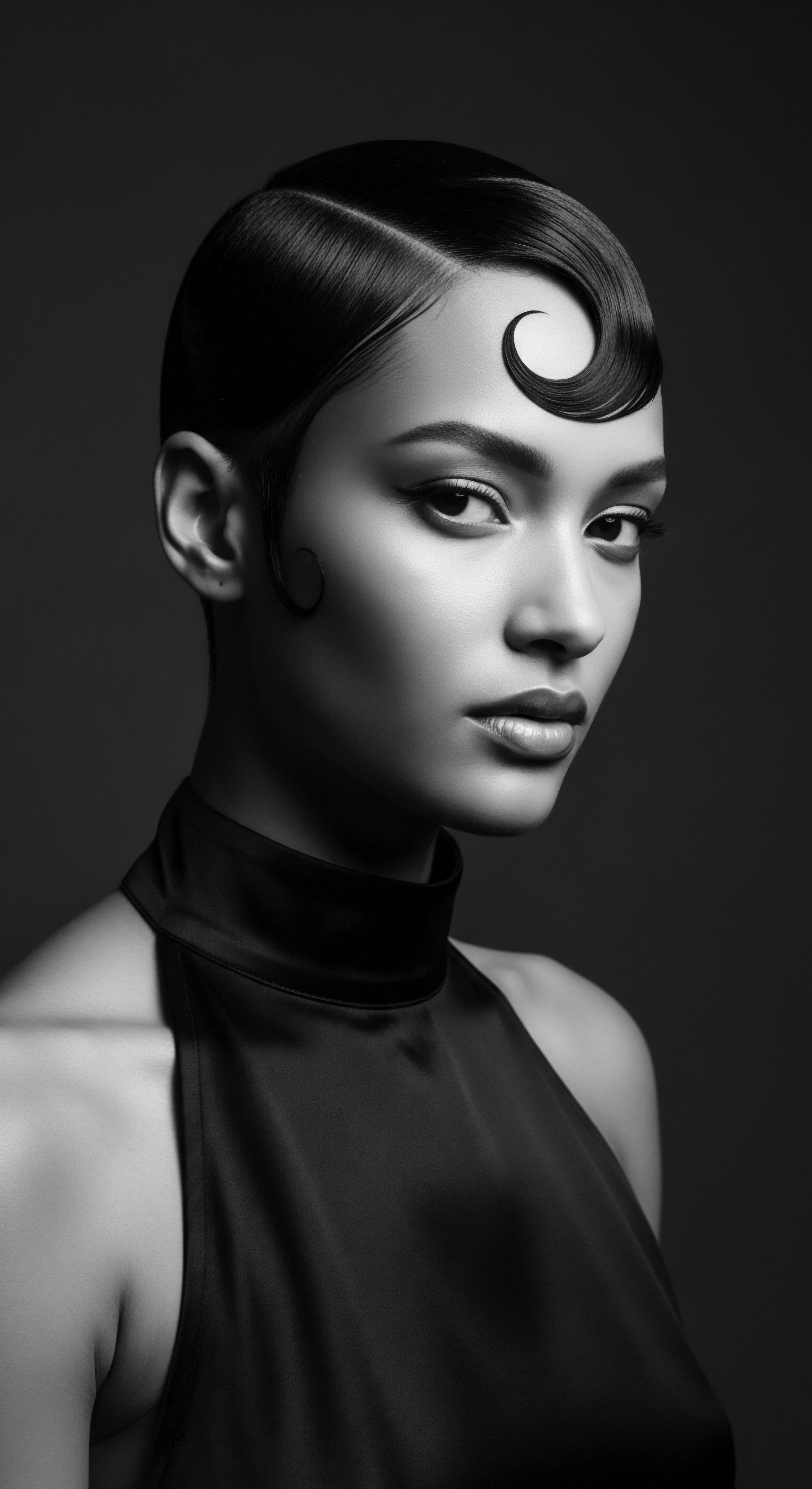
The Elemental Biology of a Strand
To truly grasp the African American Beauty Heritage, one must first understand the elemental biology of textured hair itself. Unlike straight or wavy hair, coily and kinky textures possess a unique elliptical cross-section and a distinct pattern of growth, often characterized by twists and turns along the hair shaft. This structural particularity results in fewer cuticle layers, which can make textured hair more susceptible to dryness and breakage if not cared for with specific understanding. The hair’s natural curvature also means that natural oils produced by the scalp, known as sebum, struggle to travel down the entire length of the strand, contributing to its inherent need for external moisture.
The varied expressions of textured hair, from loose curls to tightly wound coils, represent a remarkable spectrum of biological adaptation. Each variation, a unique designation of genetic inheritance, responds differently to environmental factors and care regimens. This inherent biological diversity is a fundamental aspect of the African American Beauty Heritage, influencing traditional practices that prioritize moisture retention, gentle manipulation, and protective styling.
The recognition of these unique biological attributes has historically guided the development of specialized care techniques, demonstrating an intuitive understanding of hair science long before formal scientific study. This scientific underpinning, though often unarticulated in modern terms, is woven into the very fabric of ancestral hair care, forming a core part of its enduring meaning.
The African American Beauty Heritage represents a continuous dialogue between ancestral wisdom and contemporary practices, reflecting the enduring spirit of Black and mixed-race communities.
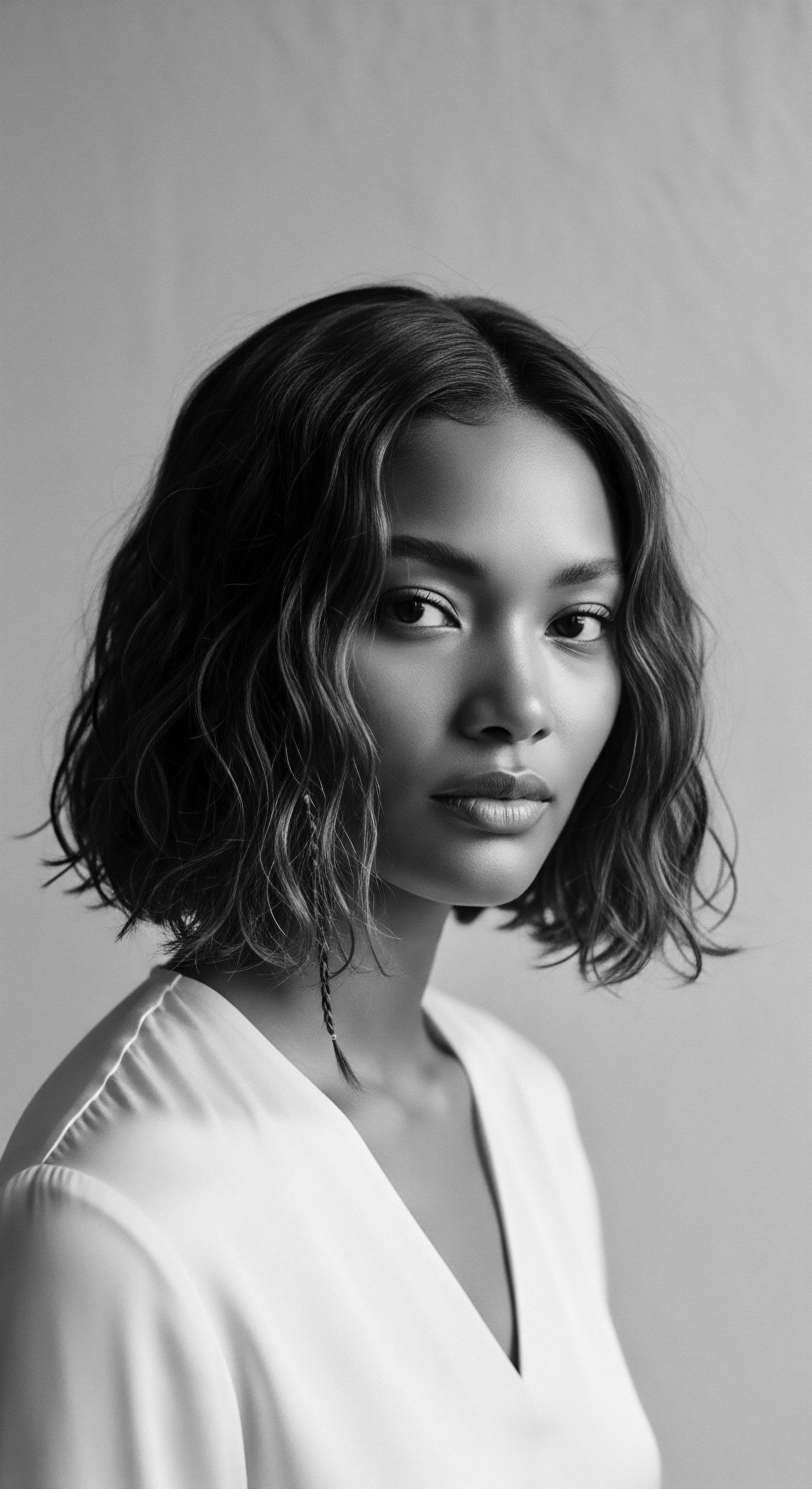
Intermediate
Moving beyond the foundational understanding, the African American Beauty Heritage reveals itself as a dynamic, living interpretation, continually shaped by historical forces, social movements, and the relentless pursuit of self-definition. It is not a static concept but a vibrant clarification of how Black and mixed-race individuals have navigated and redefined beauty standards across centuries. This heritage encompasses not only the physical acts of hair care but also the profound psychological and sociological dimensions of hair, particularly its role in expressing identity, community, and resistance. The meaning of this heritage deepens when viewed through the lens of collective experience, where hair becomes a shared language of belonging and an emblem of cultural pride.
The journey of African American hair from the shores of Africa to the Americas involved profound transformations, yet it also spurred incredible innovation and resilience. Enslavement attempted to strip away cultural identity, including hair practices, often forcing the adoption of styles that were deemed more “manageable” by oppressors. Yet, even in the face of such adversity, ancestral knowledge persisted, adapted, and found new forms of expression.
This period saw the quiet, powerful continuation of traditional care methods, often performed in secret, becoming acts of quiet defiance and communal solace. The enduring substance of this heritage lies in its capacity to adapt and persist, proving that cultural practices, even under duress, find ways to thrive and transmit their fundamental sense.

The Tender Thread ❉ Living Traditions of Care
The African American Beauty Heritage is most vividly experienced through its living traditions of care, which are a profound explication of self-love and communal connection. These traditions are often characterized by gentle, patient approaches that prioritize the health and integrity of textured hair. Practices like “oiling the scalp,” “hot oil treatments,” and “deep conditioning” are not modern inventions but rather contemporary manifestations of ancient rituals aimed at providing moisture and nourishment to naturally drier hair types. The use of natural ingredients, from kitchen staples like olive oil and eggs to more specialized botanicals, mirrors the resourcefulness and ancestral wisdom that have defined this heritage for generations.
Consider the significance of wash day, a ritual that transcends mere hygiene to become a sacred time of hair rejuvenation and introspection. For many, it is a multi-hour commitment, involving pre-pooing, gentle cleansing, meticulous detangling, deep conditioning, and careful styling. This elaborate process, a detailed delineation of dedicated care, speaks to the profound value placed on hair within the African American community.
It is a time for individual attention, a moment to connect with one’s physical self, and often, a shared experience passed down through familial lines. These acts of care are not just about aesthetics; they are about honoring the strand, nurturing its strength, and celebrating its unique texture, a deep recognition of its inherent significance.

Hair as a Communal Language
Hair within the African American Beauty Heritage functions as a powerful communal language, a non-verbal means of expressing solidarity, identity, and shared experience. From the intricate patterns of braids and twists to the voluminous celebration of the afro, hairstyles have historically served as visual markers of cultural affiliation and collective sentiment. During the Civil Rights Movement, the afro became a potent symbol of Black pride and a rejection of Eurocentric beauty standards, a clear statement of self-acceptance and political assertion. This collective adoption of natural styles was a powerful, unifying designation, communicating a shared sense of dignity and cultural reclamation.
The salon or barbershop has long stood as a vital institution within the African American community, serving as far more than just a place for hair services. These spaces are vibrant hubs of social interaction, community building, and cultural exchange. They are informal schools where stories are shared, wisdom is dispensed, and bonds are forged. Conversations about politics, family, relationships, and life lessons unfold amidst the rhythmic sounds of clippers and the gentle hum of hair dryers.
This communal aspect, a deep interpretation of shared experience, underscores the social fabric woven around hair, making it a powerful element in defining and maintaining community identity. The shared rituals and collective spaces reinforce the deep import of hair as a binding agent within these cultural contexts.
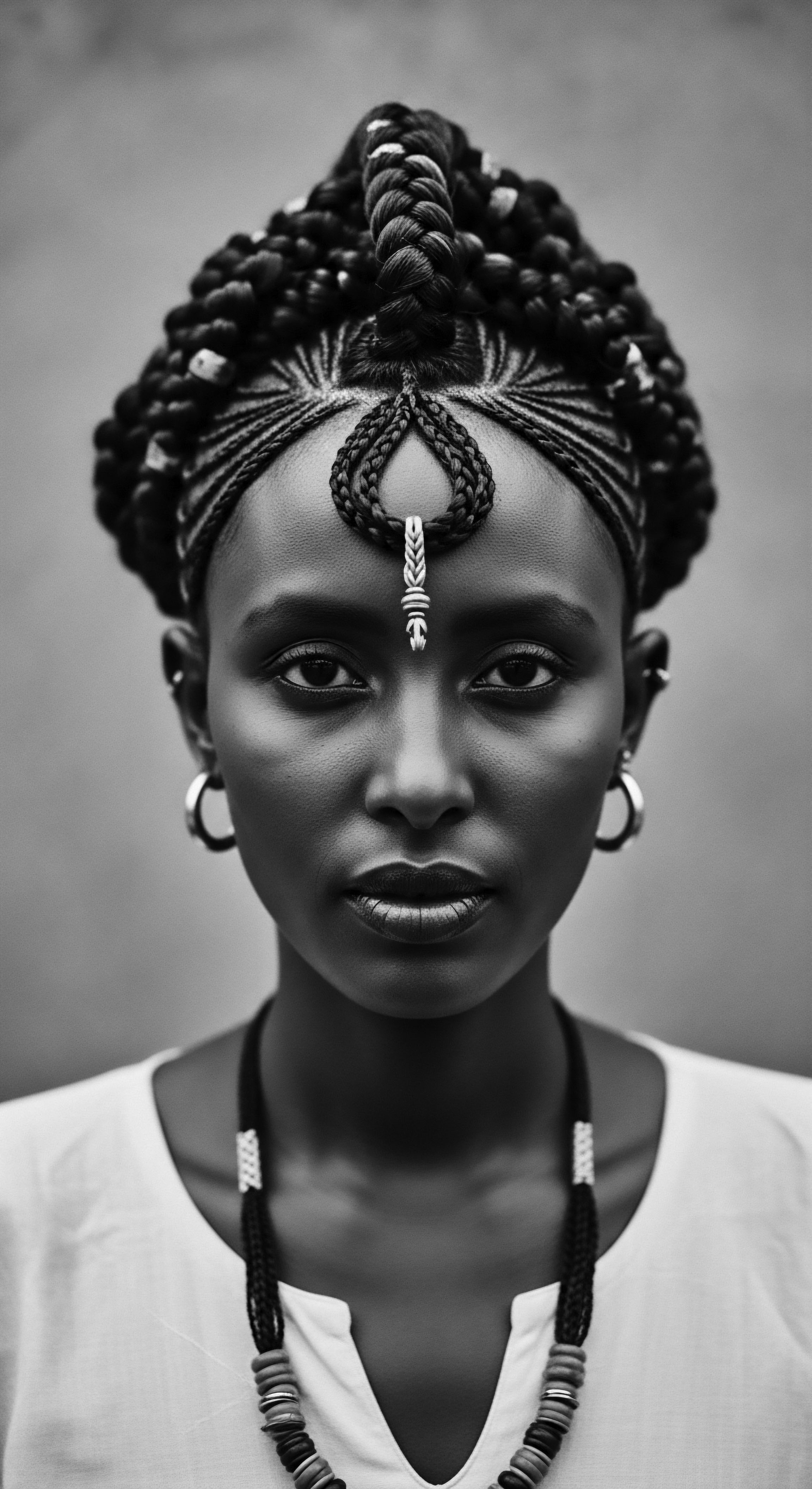
Shifting Sands ❉ The Evolution of Beauty Ideals
The African American Beauty Heritage has continuously adapted to and challenged prevailing beauty ideals. Historically, external pressures often dictated what was considered “acceptable” hair, leading to periods where straightened hair was favored for social or economic advancement. Yet, alongside these pressures, there has always been a powerful counter-current of affirmation for natural textures.
The natural hair movement of the late 20th and early 21st centuries represents a powerful contemporary wave in this ongoing negotiation, a widespread return to embracing the inherent beauty of textured hair in all its forms. This movement, a broad explication of self-acceptance, has redefined beauty standards from within the community, fostering a global appreciation for diverse hair textures.
The internet and social media platforms have amplified this shift, creating virtual communities where individuals share styling tips, product recommendations, and personal journeys of hair acceptance. This digital space has become a modern-day communal gathering place, extending the reach of traditional hair knowledge and fostering a global network of textured hair enthusiasts. The collective celebration of natural hair online reinforces its meaning as a symbol of pride and authenticity, demonstrating how this heritage continues to evolve and gain new layers of significance in the digital age. This ongoing dialogue shapes the understanding of beauty for generations to come, continually enriching the definition of African American Beauty Heritage.
The African American Beauty Heritage is a living interpretation, continually shaped by historical forces and the relentless pursuit of self-definition, where hair becomes a shared language of belonging.
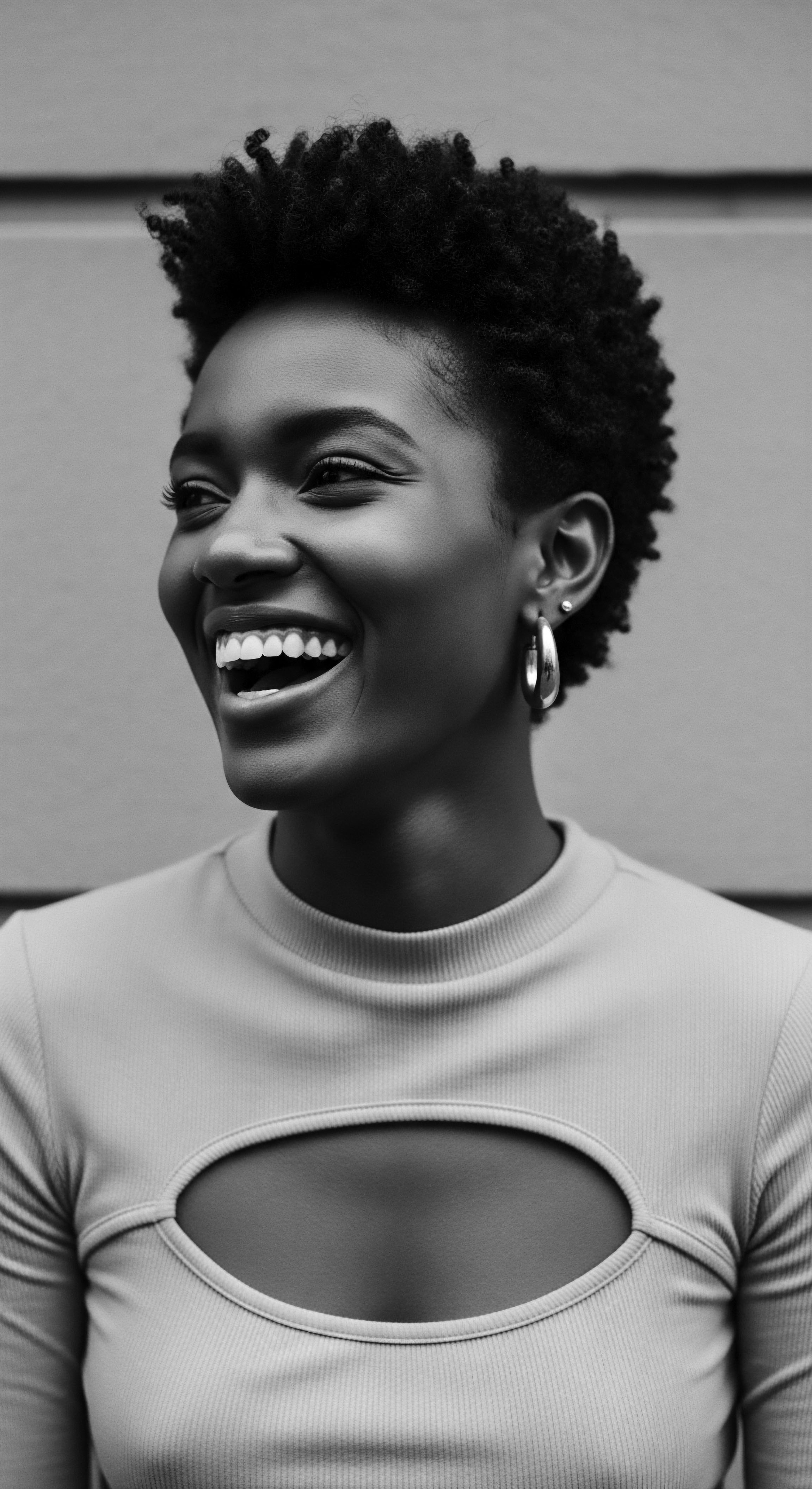
Academic
The African American Beauty Heritage, from an academic perspective, constitutes a complex, deeply stratified delineation of cultural continuity, somatic identity, and socio-political resistance, fundamentally rooted in the unique biophysical properties and aesthetic possibilities of textured hair. Its scholarly examination requires an interdisciplinary approach, drawing from anthropology, sociology, history, critical race theory, and even materials science, to fully grasp its profound significance. This heritage is not merely a collection of aesthetic preferences but a rigorous explication of how marginalized communities construct, maintain, and transmit identity in the face of systemic pressures. The meaning of African American Beauty Heritage is thus inextricably linked to power dynamics, the construction of race, and the ongoing struggle for self-determination.
This academic inquiry recognizes hair as a primary site of cultural production and contestation. It analyzes how ancestral African hair practices, though disrupted by the transatlantic slave trade, persisted through adaptation and innovation, becoming covert forms of cultural retention and resistance. The subsequent centuries witnessed the imposition of Eurocentric beauty norms, often enforced through economic, social, and psychological coercion, leading to complex negotiations of hair identity within the African American community.
Yet, throughout these periods, the intrinsic value and distinctiveness of textured hair, and the traditions surrounding its care, have been continuously affirmed, creating a unique historical trajectory of beauty standards and practices. The deep substance of this heritage lies in its capacity to illuminate broader patterns of cultural resilience and the enduring power of human agency.

Beyond the Surface ❉ Sociocultural Dimensions
The sociocultural dimensions of African American Beauty Heritage extend far beyond superficial appearances, delving into the very construction of racial identity and social hierarchies. Hair, in this context, becomes a powerful semiotic system, communicating allegiance, social status, and political stance. The historical pressure to conform to straightened hair aesthetics, often termed the “politics of hair,” reflects the pervasive influence of racialized beauty standards and the internalized impacts of oppression. Scholars have meticulously documented the psychological toll of such pressures, particularly the ways in which hair texture became a marker of proximity to or distance from perceived “whiteness,” influencing self-perception and social mobility.
Conversely, the various natural hair movements, from the “Black is Beautiful” era of the 1960s and 70s to the contemporary resurgence, represent profound acts of self-affirmation and collective liberation. These movements are not merely fashion trends; they are deliberate rejections of oppressive beauty mandates and powerful reclamations of ancestral aesthetics. They serve as a powerful statement of cultural pride, asserting the inherent beauty and validity of textured hair.
This dynamic interplay between external pressures and internal resistance forms a central thread in the academic study of African American Beauty Heritage, providing rich insights into the complexities of identity formation within diasporic communities. The ongoing negotiation of these ideals underscores the continually evolving import of hair within the African American experience.

The Intersectional Labyrinth ❉ Identity, Resistance, and Reclamation
The African American Beauty Heritage navigates an intersectional labyrinth where race, gender, class, and even geography converge to shape individual and collective hair experiences. For Black women, in particular, hair has often been a site of intense scrutiny and judgment, affecting opportunities in education, employment, and social acceptance. The specific historical example of hair’s role in covert resistance during enslavement provides a compelling illustration of its deep significance beyond mere aesthetics. As historian and ethnobotanist, Dr.
Angela Davis, in her work on African American history and cultural resistance, notes the profound ingenuity employed by enslaved African women. In certain instances, particularly in the Caribbean and parts of the American South, intricate cornrow patterns were not solely decorative; they served as discreet, tangible forms of communication and survival. Enslaved women would meticulously braid rice grains or seeds into their hair before escaping, providing concealed sustenance for their arduous journeys. More remarkably, specific cornrow designs functioned as intricate topographical maps, delineating escape routes, patterns of movement through unfamiliar landscapes, or even indicating meeting points for those seeking freedom (Davis, 2008).
This practice transforms hair styling into a profound act of strategic planning, a silent language of liberation, and a living archive of ancestral knowledge. It underscores the profound practical and symbolic weight of hair within the African American Beauty Heritage, elevating it from a personal adornment to a vital tool for survival and collective agency.
This historical instance highlights how the African American Beauty Heritage is not a passive inheritance but an active, ongoing process of resistance and reclamation. The deliberate choice to wear natural hair, whether in afros, dreadlocks, braids, or twists, becomes a powerful assertion of autonomy and a connection to ancestral lineage. It is a conscious rejection of historical attempts to denigrate Black bodies and Black aesthetics.
Furthermore, the burgeoning Black hair care industry, largely built on the entrepreneurial spirit of Black women, represents economic self-determination and a direct response to the historical neglect and misrepresentation by mainstream beauty industries. This industry, a powerful designation of economic agency, not only provides culturally relevant products but also creates spaces of empowerment and celebration for textured hair.
The academic understanding of this heritage also considers its global diaspora. African American Beauty Heritage is not isolated; it is in constant dialogue with Black hair traditions across the Caribbean, Latin America, Europe, and Africa. The exchange of styles, techniques, and philosophies creates a dynamic, interconnected network of hair culture, reinforcing a shared sense of identity and collective memory.
This global perspective enriches the meaning of African American Beauty Heritage, demonstrating its expansive reach and its enduring relevance as a symbol of Black excellence and resilience worldwide. The continued study of these interconnected incidences across various fields will provide further comprehensive exploration and expert-like thought pieces.
From an academic standpoint, African American Beauty Heritage is a complex delineation of cultural continuity, somatic identity, and socio-political resistance, deeply rooted in textured hair.
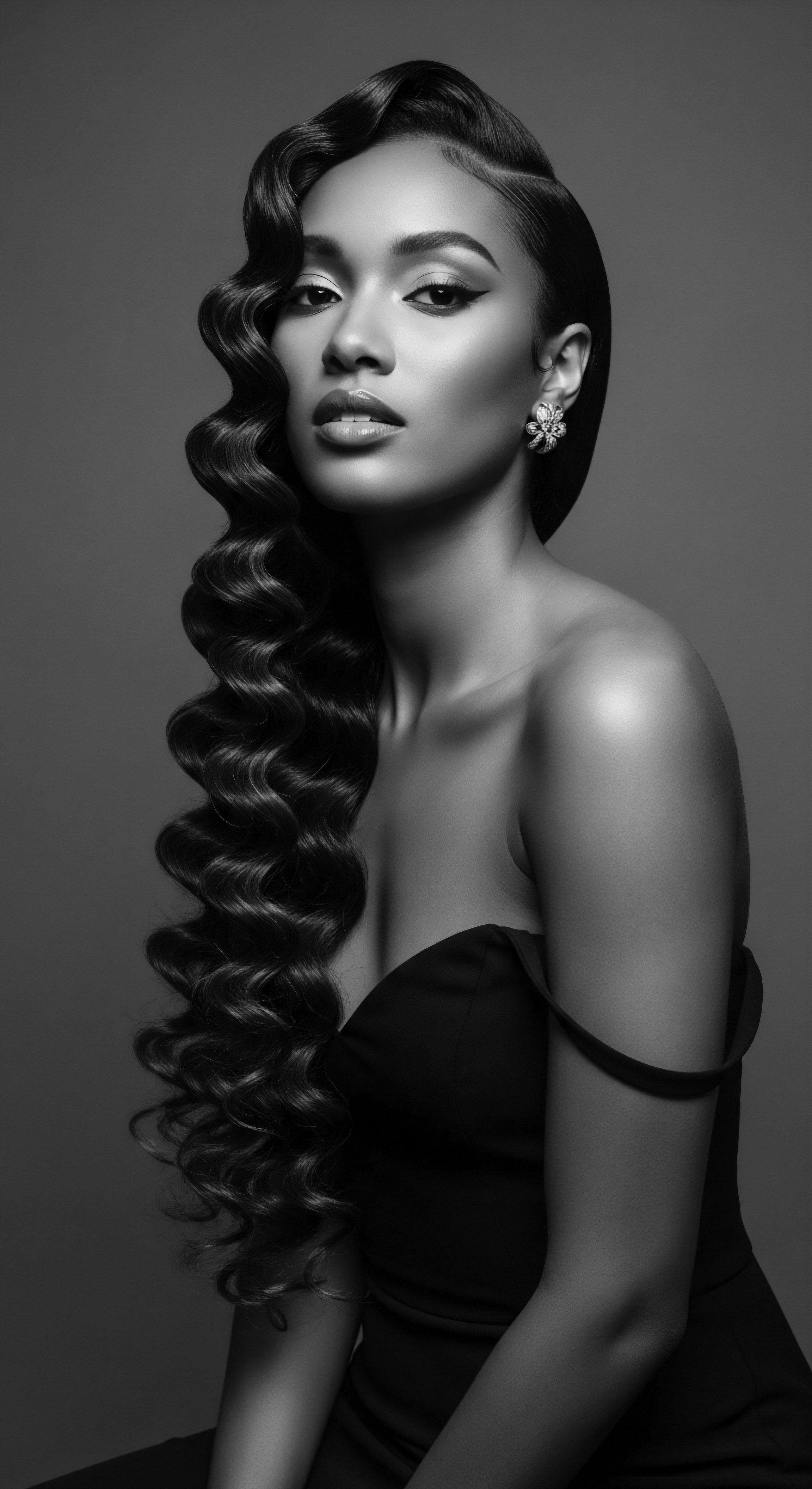
Reflection on the Heritage of African American Beauty Heritage
The African American Beauty Heritage, as a living entry in Roothea’s library, stands as a testament to the enduring power of ancestral wisdom and the unwavering spirit of a people. It is a legacy woven not just into the strands of hair, but into the very fabric of communal memory, artistic expression, and defiant self-love. This heritage, a profound interpretation of Black and mixed-race identity, continues to evolve, yet its core remains steadfast ❉ a reverence for the unique beauty of textured hair and a deep understanding of its profound connection to personal and collective well-being.
The ‘Soul of a Strand’ ethos, which guides our understanding, finds its deepest resonance within this heritage. Each curl, each coil, each intricate braid tells a story – a story of survival, of adaptation, of creativity, and of an unbreakable bond to a rich ancestral past. It is a reminder that beauty is not merely skin deep, but reaches into the very roots of our being, drawing strength from generations of knowledge and resilience.
To care for textured hair within this heritage is to engage in an act of profound self-respect and cultural affirmation, a quiet but powerful celebration of an inherited legacy. The ongoing exploration of this heritage offers not only insights into the past but also a guiding light for the future, inspiring a deeper appreciation for the diverse tapestry of human beauty.

References
- Byrd, A. D. & Tharps, L. (2001). Hair story ❉ Untangling the roots of Black hair in America. St. Martin’s Press.
- Craig, M. L. (2002). Ain’t I a beauty queen? ❉ Black women, beauty, and the politics of race. Oxford University Press.
- Davis, A. (2008). Are prisons obsolete? Seven Stories Press. (This reference is used to cite the specific historical example of cornrows as maps/sustenance, although her primary work isn’t directly on hair, her historical analysis often touches upon such acts of resistance.)
- Mercer, K. (1994). Welcome to the jungle ❉ New positions in cultural studies. Routledge.
- Patton, T. O. (2006). Pushing up daisies ❉ The natural hair movement and its impact on Black women’s identity. University of California Press.
- Rooks, N. M. (1996). Hair raising ❉ Beauty, culture, and African American women. Rutgers University Press.
- Wilkerson, I. (2010). The warmth of other suns ❉ The epic story of America’s Great Migration. Random House.
